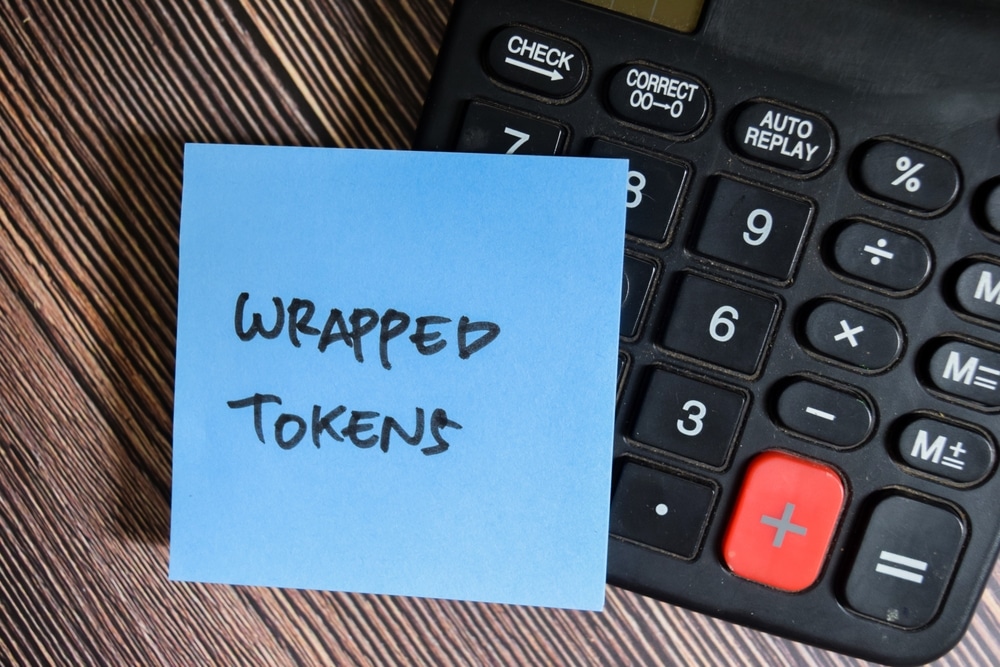
Wrapped Token Explained: Understanding How Wrapped Tokens Functions and Benefits
A wrapped token is a digital asset or cryptocurrency supported by another asset or coin, mostly one native to a specific network or blockchain. Wrapped tokens are crucial for cross-chain interoperability and decentralized finance apps.
Wrapped tokens allow users to leverage the different services and features offered on numerous blockchains by permitting assets from one blockchain to be utilized effectively on another. Based on the wrapping mechanism’s precise use case and architecture, the tokens can represent various assets, for instance, stablecoins, nonfungible tokens (NFTs), and cryptocurrencies.
A good example is Wrapped Bitcoin (wBTC), famous on the Ethereum platform. WBTC represents Bitcoin and allows communication with decentralized exchanges and Ethereum-founded decentralized finance protocols while maintaining Bitcoin’s inherent attributes and values.
How do Wrapped Tokens Function?
Wrapped tokens are beneficial when working with platforms for decentralized applications and decentralized finance that use several blockchains. The mechanism is described below:
Asset locking
A particular amount of the native coin of one blockchain, for instance, Ethereum, is ‘locked’ into a smart contract to create a wrapped token. A trusted entity or decentralized autonomous organization (DAO) monitors the locking procedure.
Issuance of wrapped tokens
Following the locking of the original cryptocurrency, a corresponding number of wrapped tokens are generated or released on a separate blockchain. With the other blockchain’s ecosystem, the wrapped tokens, which substitute the locked native coin’s ownership, can be traded freely.
Types of wrapped tokens
wBTC, wETH, blockchain-specific wrapped tokens, and stablecoin equivalents are some examples of wrapped tokens.
Wrapped tokens are meant to operate harmoniously with specific blockchain settings, ensuring the combination of several assets into one ecosystem.
Wrapped Bitcoin, a variety of wrapped tokens, is a major example. It enables Bitcoin owners to utilize their holdings in Ethereum’s decentralized applications and on decentralized finance platforms.
The Ethereum network is also made more efficient through Wrapped Ether (wETH), which allows trading and smart contract interactions. Equally, stablecoins can be easily utilized across various blockchain ecosystems owing to stablecoins’ wrapped equivalents, for instance, Dai, USD Coin, and Tether.
Some blockchains host their wrapped tokens, for instance, Polygon and BNB Smart Chain (BSC), ensuring cross-chain compatibility and enabling several decentralized use cases. In the dynamic cryptocurrency ecosystem, the tokens are vital in closing the gap between blockchain networks, enhancing interoperability, promoting liquidity, and extending accessibility.
Benefits of wrapped tokens
First, wrapped tokens allow cross-chain interoperability, ensuring the smooth integration of assets from several blockchains into a particular ecosystem. This enhances users’ access to liquidity and several assets.
Wrapped tokens can improve the integration of assets with other functionality. For instance, wBTC can be utilized to incorporate Bitcoin into the Ethereum decentralized finance ecosystem.
Wrapped tokens promote decentralization by offering users additional power over their assets. The tokens significantly increase the utility, adaptability, and accessibility of digital assets across several blockchain networks, ensuring a more dynamic and connected crypto economy.
Wrapped tokens limitations
Wrapped tokens rely on custodians to hold the original assets, raising queries concerning counterparty risk and centralization. The wrapped token’s worth and value might be affected if the custodian encounters issues.
The intricacy and potential cost of wrapping and unwrapping tokens can demotivate some users. Additionally, depending on other protocols and bridges to wrap tokens has possible security risks and might evoke the need for trust in third-party systems.
Not all assets can be wrapped readily, limiting the variety of assets utilized across chains. Finally, regulatory problems linked to wrapped tokens may result in legal uncertainty, affecting their utilization and adoption.
Despite these downsides, wrapped tokens continue to be essential for linking blockchain ecosystems and enhancing asset utility. However, users must be careful and informed while utilizing them.




